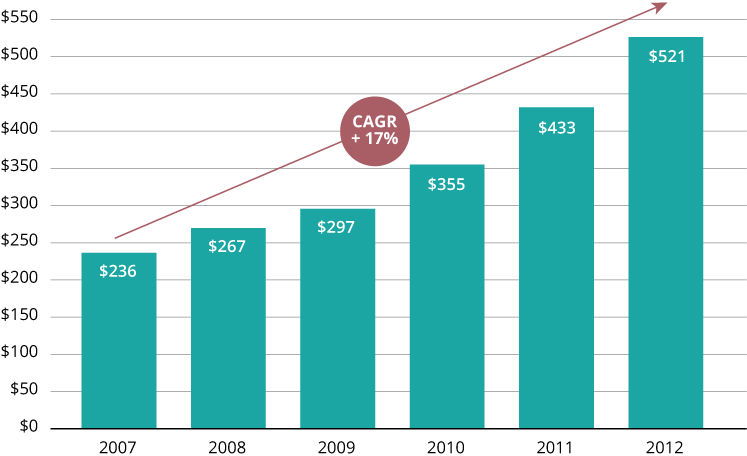The
law of
virtual
selection
On October 2, Commerce Sherbrooke launched "Branchez-vous", a project to encourage Sherbrooke businesses to be more present on the Internet. The Acomba e-commerce team was there, as was the famous Quebec blogger Michelle Blanc.
The reason for this project is that in Sherbrooke, just 46% of retail businesses have a website, compared to 52.1% for the rest of Quebec. This is a very small portion in both cases.
Why are so many Quebec businesses absent from the Web and what are the consequences?
Quebec and Canada are not the only ones to "lag"
Before we say that the lag in Quebec's presence on the web is alarming, let's draw a global picture of the situation.

- In Canada, just 45.5% of businesses had a website in 2013, a proportion that decreases to 41% for small businesses.
- In the United States, still in 2013, a study led by Yodle reveals that just 48% of SMBs had a website.
- In the United Kingdom, according to a study led by Hibu the same year, 55% of businesses had a website.
- In France, according to results that date from 2011, the figure is 51%.
- In Australia, a study conducted in 2012 among 850 businesses with less than 50 employees showed that 48% of them did not have a website.
In short, in call cases, about one out of two businesses do not have a website and, in most cases, the journalists or bloggers who report on these studies are lamenting about the "alarming lag" in their country.
Did you know?
With 89% of web surfers, Canada is ranked 7th among the most active countries on the Internet, exceeding even the United States. The number one country is Norway, with 95% of web surfers.
Why does only one out of two businesses have a website?
A number of businesses are simply not looking to expand and say that they do quite well with a simple network of contacts.
This perception is justified when, for example, two brothers register as a business to do major renovations in their family and are paid regularly. Considering that 55% of Canadian businesses have less than 5 employees, this situation may be more prevalent than we believe and partially explains the aberration of "one out two businesses."
That said, many entrepreneurs have a mistaken perception of the Web and would benefit from being more present.
The extinction of businesses absent from the Web
Take Australia for example, where 26% of businesses do not see any added value in having a website. In July 2012, MYOB Business Monitor contradicted this perception by proving that Australian SMBs that have a website are 35% more likely to increase their revenues than SMBs without a site.
In some cases, absence from the Web can have serious consequences. In 2014, the French-Belgian company Email-Brokers revealed that over 81% of the approximately 60,000 French businesses that went bankrupt in 2013 did not have a website.
These lessons also apply to Canada, since the disadvantages of being absent from the Web are not cultural, but universal.
10 désavantages liés à l'absence du Web :

The next step in virtual evolution: e-commerce
It seems strange that in 2014 we still have to tell businesses that having a website is crucial. In 2024, it will seem strange that we have to tell businesses that selling on the Web is crucial!
Since 2007, global online sales have grown 17% per year.

In Canada alone, in 2013, e-commerce sales amounted to $136 billion, up $14 billion over 2012. In fact, 87% of Canadians purchase online at least once a year and 49% at least once a month. However, just 13% of businesses sell online.
Many businesses that did not join the Web wave at the beginning of the 2000s have paid the price. If you want to be proactive, seize e-commerce opportunities before it becomes a standard!
This article was originally published on October 21, 2014.

The Acomba blog is brimming with articles on business, IT and business management.
Subscribe so you don’t miss a thing!

I am already subscribed